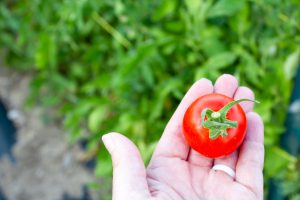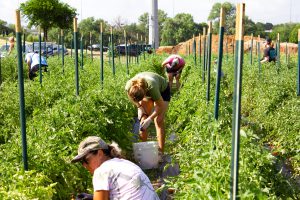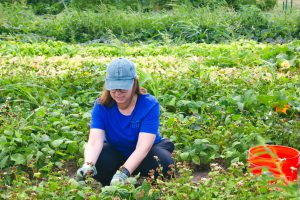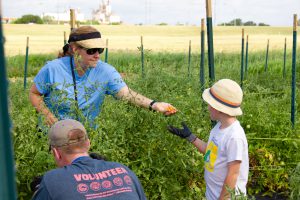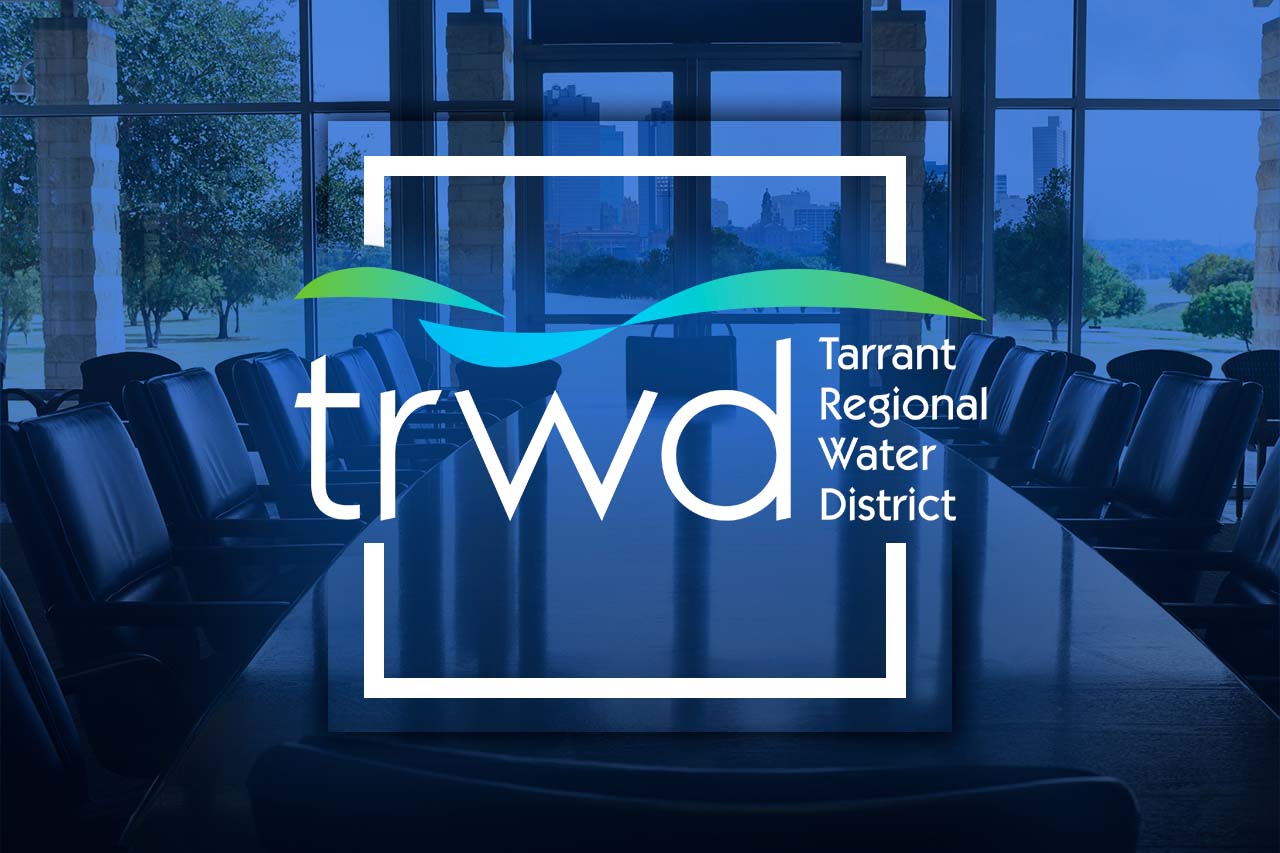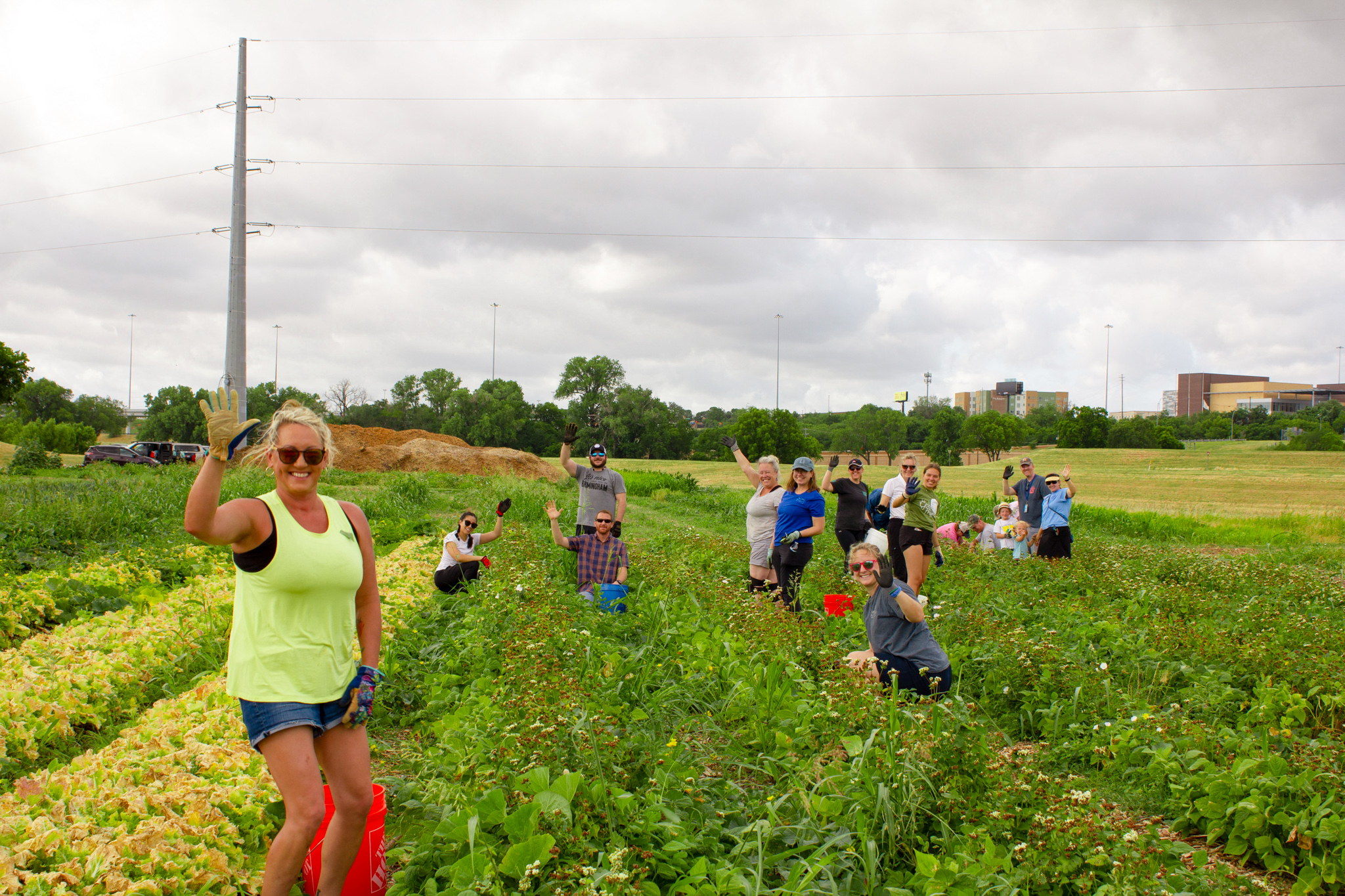
Gregory Joel sits on his pickup’s tailgate wiping sweat from his brow. Behind him are bright blue and day-glo orange buckets full to the rim with red, ripe tomatoes.
Harvested on a suffocatingly hot June afternoon, it’s the latest batch to be picked by two volunteer workers stooping over and walking the long rows of tomato plants. They say there’s more to come.
A lot more.
Joel and his helpers are working at Opal’s Farm, located on 2.5 acres along the Trinity River provided by the Tarrant Regional Water District; the operation is expected to produce up to 20,000 pounds of produce this year.
But beyond this year’s anticipated ample harvest of tomatoes, peppers, cantaloupes, potatoes and other cash crops – a lot of it to be donated or sold at discounted prices to needy residents in the inner city – Opal’s Farm is credited with planting the seed for an urban farm movement.
After being open only three years, Opal’s Farm is working with Grow Southeast, a grassroots effort to launch other similar, large-scale community gardens in southeast Fort Worth; and Opal’s Farm recently agreed to participate in a Tarleton State University agricultural degree program to support that effort.
Its budding success has convinced corporate and nonprofits to support their cause, with donations flooding in from around the nation and the world because of the spotlight on its namesake, Opal Lee, the civil rights activist and community advocate who turned Juneteenth into a national holiday.
“We’re very proud of where we are, what we’ve been doing, and where we’re headed,” said Gregory Joel, the farm manager. “We’ve become a training ground and it’s spreading through Tarrant County.”
“Close to our hearts”
TRWD, through a special use permit, allows Unity Unlimited, a non-profit operated by Lee’s family, to use the land. The farm is located on 15 acres near, not surprisingly, the Riverside neighborhood in the heart of the city and in the shadow of the downtown Fort Worth’s skyline.
Beyond providing property, TRWD employees also volunteer to work the farm. Memorial Day weekend about 15 employees from the engineering departments at TRWD helped pick tomatoes, green beans and other produce. They also pulled more than a few weeds.
“It was a lot of hard work. And it was hot! They said we did two weeks of work in two hours,” said Rachel Crawley, asset management program lead in the engineering department. Crawley is already planning to return.
“It is close to our hearts,” she said.
Slow but steady growth
Growth at Opal’s Farm has been slow and steady.
In 2019, the first year they tilled the earth, Joel planted about 125 beds using an old tractor and a new, donated tiller. It produced about 3,500 pounds. The next year, Covid 19 hit, slowing progress. The farm harvested 8,000 pounds of melons, potatoes and other cash crops.
Then there was the Great Freeze of 2021, followed by record-breaking rainfall in May. Despite those setbacks by Mother Nature, the farm still began to hit its stride, producing about 9,000 pounds of crops last year.
This year, when taking the summer and fall harvests into consideration, Joel is predicting that the output will double to about 20,000 pounds.
“It’s been a slower growth than we anticipated, but we’re feeling pretty good at where we’re at,” Joel said. “The overall goal is to form a community and I think that’s beginning to happen.”
The farm was started by Lee to help address the “food desert” in her inner-city neighborhood. Residents lack easy access to supermarkets and fresh produce, forcing them to rely on what’s in stock on the shelves of gas stations or dollar stores.
As a result, roughly 10 percent of the farm’s output is donated to a local food bank, 30 percent is sold at inner-city neighborhood markets at discount prices. About 60 percent is sold at the Cowtown Farmers Market at wholesale prices, with the profits plowed into the operational budget.
“I didn’t know how to manage my expectations. I thought we’d give it a shot and see what happens,” said Charlie Blaylock, the owner of Shine’s Farmstand in Azle, who helps with the farm and its business plan.
“I’m surprised by how engaged the community has been, how much volunteer support we get from the citizens of Fort Worth as well as from businesses in Fort Worth,” he said.
Planting the seeds of a movement
Opal’s Farm and TRWD’s partnership has helped establish the roots of the urban farm movement, Joel and Blaylock said.
Tarleton University is so impressed with the farm’s work that it recently agreed to a partnership to provide agricultural training to individuals who have served time in prison, helping them get a certificate or a degree. They are still figuring out the academics, but hope to start in the Fall semester.
Using a United Way grant, Blaylock has worked with Grow Southeast to start an apprenticeship program where two residents from the Stop Six area are learning how to be farmers. The grant also paid for the development of a curriculum that will be used to teach others.
Grow Southeast, a collaboration with Healthy Tarrant County Collaboration, CoAct, and Tarrant County Commissioner Roy Brooks’ office, works a section of Opal’s Farm as a test lab while developing over 13 acres in southeast Fort Worth for urban farming.
Their work together convinced the Rainwater Foundation to award them a $370,000 grant, with $184,000 for a tractor for Opal’s Farm, said Linda Fulmer, executive director of the Healthy Tarrant County Collaboration.
“Each year they produce more and more food and they’ve come up with a (successful) business model,” Fulmer said. It has become the “seed” of the urban farming movement in Tarrant County.
“A lot of people talk about it, but not a lot of people actually make it happen,” Fulmer said. “Trust me, we’ve talked to a lot of people who have big ideas and they really like the idea of growing food. But their ideal time is limited to growing in pleasant weather on a Saturday morning.”
She also praised TRWD for its contribution to making Opal’s Farm a reality.
“It’s a wonderful contribution that it’s made to the community,” Fulmer said.
Still a long way to go
Joel drives around the farm’s edges. He looks at a huge pile of discarded produce on one end, then goes by the mountain of wood chips that’s been dumped by a local tree-trimming company. All of it is future compost.
He then goes to one of the shipping containers Opal’s Farm keeps on the property, hooks up a trailer and pulls out a generator. He tows it to a metal cage on the river bank, where it is hooked up to a pump.
Soon, cool Trinity River water is being sprinkled on the crops. The new watering system saves him valuable time that he can use to run the farm, to go to market days to sell produce, to just figure out what to do next.
Joel, who works for “Ms.Opal,” still considers it a family farm. But he also knows it is that, and so much more. There is still a lot of work left to do.
“We’ve come a long way, and we’ve got a long way to go,” Joel said.

